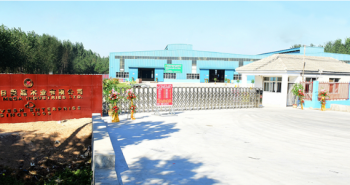FORM PLYWOOD is resistant to water and mechanical damage due to a special protective shell that covers it from the outside. Usually, it is a film of 120 g/m2 or 220 g/m2 density. The edges of FORM PLYWOOD are protected with water-repellent paint.
FORM PLYWOOD is a material that can withstand 50-100 turnover cycles, six hours of boiling in water, contact with an alkaline environment, hot water vapor or liquid concrete. Its surface is resistant to mold, open burning, easy to clean, and allows the use of metal fasteners.
At the same time, FORM PLYWOOD is affordable, light in weight, and easy to handle. These unique characteristics set FORM PLYWOOD apart from other materials, and this makes it indispensable in various industries – from furniture production to aircraft construction. True, for improved moisture resistance, their impregnation and coating may contain a large percentage of toxic phenols that are harmful to human health.
QUALITY OF FORM PLYWOOD
- Film density Film-faced FORM PLYWOOD – 120 or 220 g/m², depending on the type of film – this provides high strength and waterproof properties;
- The thickness of the laminate in form – 0.4-10 mm, the thicker the layer, the higher the resistance to mechanical stress and aggressive substances;
- The emission class for FORM PLYWOOD used in residential premises must be at least E1 (no more than 10 mg per 100 g of plywood weight), for all other tasks – at least E2 class (no more than 30 mg per 100 g of plywood weight);
- Moisture content of film faced plywood – 5-10%;
- FORM PLYWOOD sheet density average 650 kg/m³
- Maximum tensile strength – 40 MPa;
- Maximum strength in static bending – 60 MPa.
- Phenol- formaldehyde film – kraft paper impregnated with phenol-formaldehyde resin. It has a distinguishable dark brown color (if coloring pigments were not added). This coating is very dense, provides high moisture resistance, and has excellent performance. But it is used only for industrial tasks and outdoors since it contains toxic formaldehyde. But for, creating reusable formwork and temporary frames, it is an ideal option.
- Melamine film – kraft paper is impregnated with a safer melamine-formaldehyde resin, which does not emit harmful substances at room temperature (below 40 ° C). Without the use of coloring pigments, such a film is light yellow or transparent; under it, the natural veneer pattern is clearly visible. Such FORM PLYWOOD outwardly looks like veneered (yet lamination and veneering are different technologies). But most often, the film is dyed in various colors and shades, and a pattern or even a 3D relief is applied that imitates natural materials. Such FORM PLYWOOD can be used in residential premises, for the manufacture of furniture.
The coating can be smooth FF or grooved FW, single or double sided. Mesh, anti-slip FW coatings are sometimes applied in addition to the main laminating layer. For this, a special fine mesh FW is used. FW anti-slip FORM PLYWOOD is needed for laying floors in vehicles, creating various floorings, as well as formwork.
According to the quality of applying the laminate, FORM PLYWOOD is divided into 3 grades.
- 1st grade corresponds to the highest quality – the surface of the product should not have non-laminated areas and defects;
- 2nd grade allows no more than 10% of visual lamination defects that do not reduce the characteristics of the material;
- Material with a large number of defects is classified as the lowest, 3rd grade.
Sheets currently in production have side lengths of 1200, 1220, 1250, 1500, and 1525 mm.
Current production sheet thickness can be 6.5mm, 9mm, 12mm, 15mm, 18mm, 21mm, 30mm and 40mm.
USAGE
In monolithic construction, FORM PLYWOOD is an indispensable material for creating formwork. It is resistant to liquid concrete, mechanical stress, is easily cleaned with a solvent and helps to significantly reduce the cost of work, as it can be used 50-100 times. With its help, the foundations of private and multi-apartment residential buildings, columns, bridges, ceilings are erected. For formwork, laminated FSF sheets with a thickness of 18-21 mm with a smooth FF or mesh FW surface are usually used.

